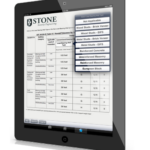Did you know that there are more than 100 documents devoted to blast resistant/anti-terrorism design or testing for buildings? Do you know which ones apply to you?
Our team recently sat down to review the most recent standards and guideline documents to make sure that we were all up-to-speed on the latest and greatest in our field. The meeting left us all with a slight headache. Below is a sample of some of the recently updated, often confusing, documents that are the current backbone of our industry.
• The Veterans Administration has released (this year) a new version of their two Physical Security Design Manuals. The new documents are completely reformatted but do provide additional detail as to the intent of the requirements with respect to the building facades and structures.
• The current UFC 4-023-03 Security Engineering: Design of Buildings to Resist Progressive Collapse limits or restricts the use of Fiber Reinforced Polymers (FRPs) as a retrofit to meet the tie-force requirements of the document.
• A new version of the UFC 3-340-02 Structures to Resist the Effects of Accidental Explosions (the old TM 5-1300) was released in September of last year. Among other things, this new version excludes the use of steel wire reinforcement and steel welded wire reinforcement for reinforced concrete.
• The 2012 and 2013 versions of the UFC 4-010-01 DoD Minimum Antiterrorism Standards for Buildings require that exterior doors be designed for blast resistance (with some exceptions that are detailed in the documents), but they also require that proof of compliance with the standard be through testing (referencing fairly new test standards) rather than analysis. This can be a problem for door vendors who rely on analysis to show compliance, performed their testing before 2003, or who have tested a handful of doors and have extrapolated that to different configurations.
While the majority of the changes and updates make the documents better, they can make cost estimating and implementation difficult. Knowing the differences from the older to the new documents can save a design/construction team time, money, and effort by avoiding confusion.
This is one of the topics that we will be discussing in our upcoming face-to-face blast class: Protective Knowledge – Blast Resistance by Design (May 4 – 8 in Arlington, Virginia).
One of our goals for the class is to help attendees better understand the implications on cost and design of the different criteria documents, and blast resistance in general.
Click here for more information for more information on the class.
The engineers at Stone Security Engineering have more than 50 years of combined experience in protective design projects incorporating blast, ballistics, forced entry, and vehicle ramming resistance requirements. During these years, we have seen what works – and what does not work – when implementing these specialized design requirements in new and existing buildings.
We want to share this knowledge with you.
Our short-course, Protective Knowledge – Blast Resistance By Design, is geared toward professionals involved in all phases of projects and will provide detailed insight into approaches and impacts of protective design.
Have you ever asked yourself:
▪ Do blast resistant doors meet NFPA 101 requirements?
▪ Are blast resistant windows ballistic resistant as well?
▪ Can precast facades meet DoD AT
▪ FP requirements?
▪ Where do I look for subcontractors who can supply and install blast resistant products?
▪ Is there such a thing as ballistic resistant window film?
▪ What in the world is balanced design?
▪ Do I need more than 30m standoff to protect my building?
▪ Are there any mobile device Apps that can help me understand some of the requirements?
We will be answering these questions and many, many more during this course. Click here for more information.
If you have been involved with a project that includes blast loads, you have probably heard of “Balanced Design.” If the  project had more than one blast consultant, you probably heard way more about Balanced Design than you ever wanted to hear. Ever. This is because there is no single approach to incorporating it into a project. So….the million dollar question is: What the heck is Balanced Design?
project had more than one blast consultant, you probably heard way more about Balanced Design than you ever wanted to hear. Ever. This is because there is no single approach to incorporating it into a project. So….the million dollar question is: What the heck is Balanced Design?
Balanced design is a concept commonly used in blast and earthquake engineering that refers to designing supporting elements to the ultimate strength of the supported elements.
The key is to create structural fuses (just like an electrical fuse) designed to be a point of safe failure that will limit damage from a larger than design blast (or earthquake) from cascading to larger and larger areas.
In earthquake engineering, a typical application of this concept is the “strong column/weak beam” concept required in high seismic zones. This requirement was instituted to avoid catastrophic failure by forcing the beam to fail before a column in case of a larger than design seismic load. While there would still be a failure, the result of the failure would be less extensive than if the column failed.
From a blast perspective, balanced design can be applied to both structural and non-structural elements. There are several ways to achieve balanced design, these include:
Balanced Design acknowledges that it is difficult to precisely predict the magnitude of an earthquake or the size of a blast, and it is therefore important to create a controlled failure mechanism to limit the extent of damage.
If you want to learn more about this subject, and many others, join us for our class “Protective Knowledge – Blast Resistance By Design”. Click here for more information.